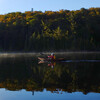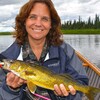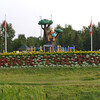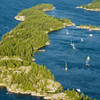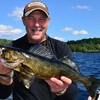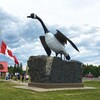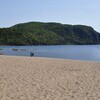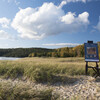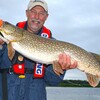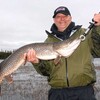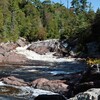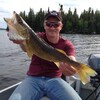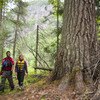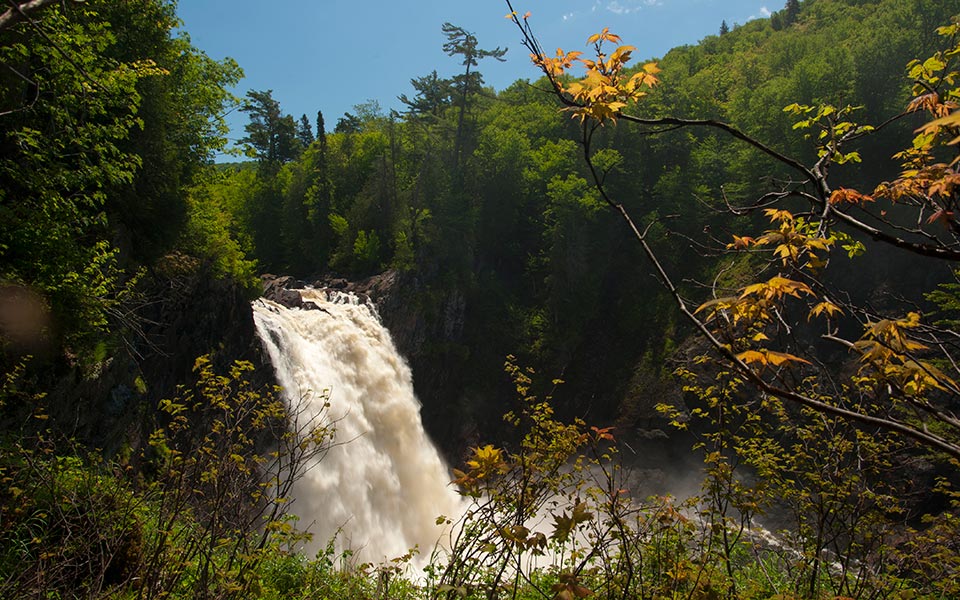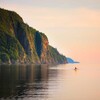
Wreck of the Edmund Fitzgerald
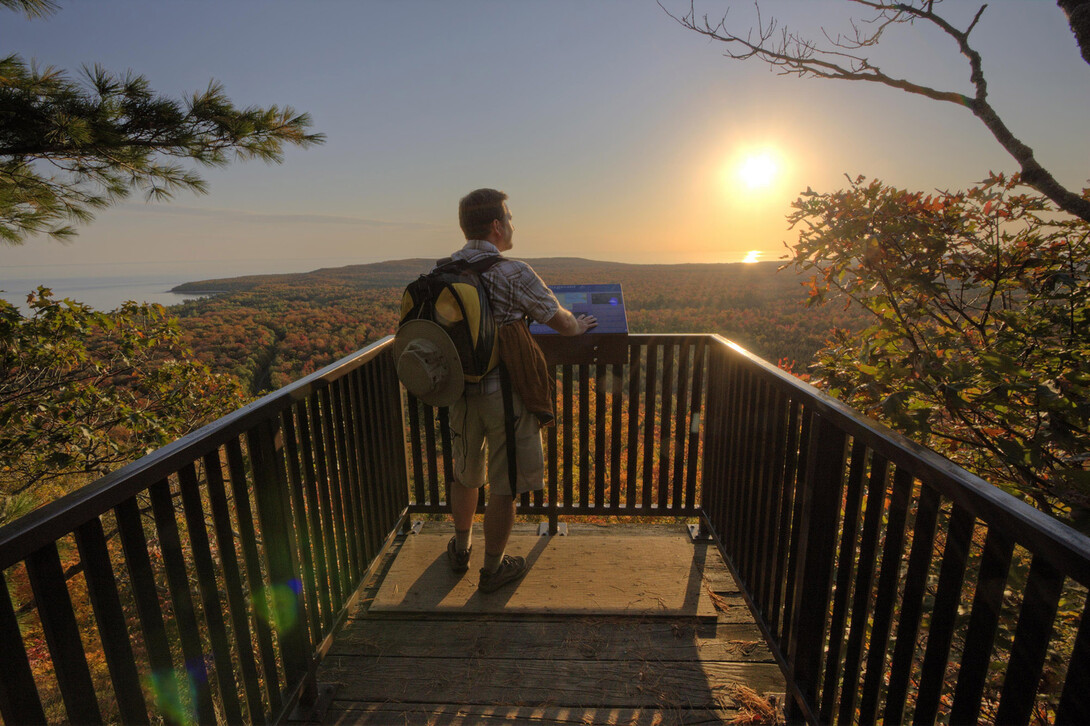
Why Gordon Lightfoot's Classic Song Is Memorable
On November 10, 1975, ore carrier Edmund Fitzgerald, sank in Lake Superior during a November storm, taking the lives of all 29 crew members. Later that month, Canadian singer/songwriter Gordon Lightfoot, inspired by an article in Newsweek Magazine, wrote what is probably his most famous song: "Wreck of the Edmund Fitzgerald."
of the big lake they called "Gitche Gumee."
The lake, it is said, never gives up her dead
when the skies of November turn gloomy.
With a load of iron ore twenty-six thousand tons more
than the Edmund Fitzgerald weighed empty,
that good ship and true was a bone to be chewed
when the "Gales of November" came early.
coming back from some mill in Wisconsin.
As the big freighters go, it was bigger than most
with a crew and good captain well seasoned,
concluding some terms with a couple of steel firms
when they left fully loaded for Cleveland.
And later that night when the ship's bell rang,
could it be the north wind they'd been feelin'?
when the waves turn the minutes to hours?
The searchers all say they'd have made Whitefish Bay
if they'd put fifteen more miles behind 'er.
They might have split up or they might have capsized;
they may have broke deep and took water.
And all that remains is the faces and the names
of the wives and the sons and the daughters.
in the rooms of her ice-water mansion.
Old Michigan steams like a young man's dreams;
the islands and bays are for sportsmen.
And farther below Lake Ontario
takes in what Lake Erie can send her,
And the iron boats go as the mariners all know
with the Gales of November remembered.
in the "Maritime Sailors' Cathedral."
The church bell chimed 'til it rang twenty-nine times
for each man on the Edmund Fitzgerald.
The legend lives on from the Chippewa on down
of the big lake they call "GitcheGumee."
"Superior," they said, "never gives up her dead
when the gales of November come early!"
To anyone that may remember this wonderful song (it hit #2 on the Billboard pop chart in 1976), written in dedication to the 29 souls that rest forever in the depths of Lake Superior, you only have to hear the first few lines before the haunting melody becomes stuck in your mind and heart.
The Gales of November
It was the gales of November on Lake Superior that sunk the Edmund Fitzgerald. The November Gales is a phenomenon that each year brings photographers and artists to the shores of this great lake to capture the energy, power and emotion of this great body of water as it surges and fights the coming winter. Today, whether by canvas or by point-and-shoot, acclaimed and novice artists gather to capture the strength of Lake Superior as it cascades and crashes into shorelines that, just a few short months earlier, were filled with sunbathers on those hot, sultry summer days in Algoma. It's a body of water that commands respect and that can turn on you if you fail to show her deference when the calendar rolls to November.
Where the Wreck Lies
What few visitors realize, as they enjoy the beauty and tranquillity of the Big Lake in the summer, is that you can stop along the highway at Pancake Bay Provincial Park and hike The Lookout Trail where you can view the Pancake Bay area and the direction of where the Edmund Fitzgerald's final resting place is located.
(The ship lies in about 300 feet of water -- half its length -- almost directly west of Pancake Bay, west of Coppermine Point, on the Canadian side of the border). In fact, there are five shipwrecks around Pancake Bay / Coppermine Point and one of them is called the Batchawana which sank in 1907. While you enjoy the majesty of mighty Lake Superior, should the haunting tune of Gordon Lightfoot enter your mind, close your eyes and remember the November Gales of 1975.

The Edmund Fitzgerald is amongst the largest and best-known vessels lost on the Great Lakes. She is not alone on the Lake Superior seabed in this area. In the years between 1816, when the Invincible was lost, to the sinking of the Fitzgerald in 1975, the Whitefish Point area has claimed at least 240 ships.
About The Lookout Trail
- Hike the entire trail or 14 km (5 to 7 hours), or do the 7 km return (2 to 3 hours) to the Lookout
- It's located across the Pancake Bay Provincial Park campground
- The stretch of water from the Lookout is known as the "graveyard of the Great Lakes"
- There are 2 viewing platforms
- Be sure to wear sturdy shoes or hiking boots, and pack food and water
Resources
Recommended Articles
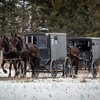
A Trip into the Past
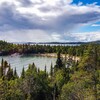
Pukaskwa National Park
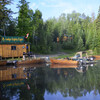
Fishing Esnagi Lake

The Ultimate Group of Seven Road Trip
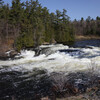
7 Stops Along the North Channel
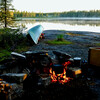
Experience Crown land camping
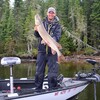
Fishin’ in the Salad
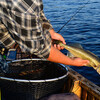
Minnows, Leeches, Nightcrawlers

Adventure Biking in Algoma
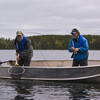
Train to Algoma

Robertson Cliffs
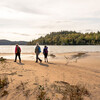
Gargantua Harbour and Warp Bay

The Wharf
Highway 638

A Lake Huron Road Trip

Whitefish island
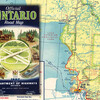
The Grand Algoma
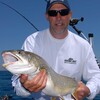
Attractor Trolling for Lake Trout
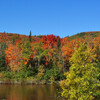
Riding Hwy 129
